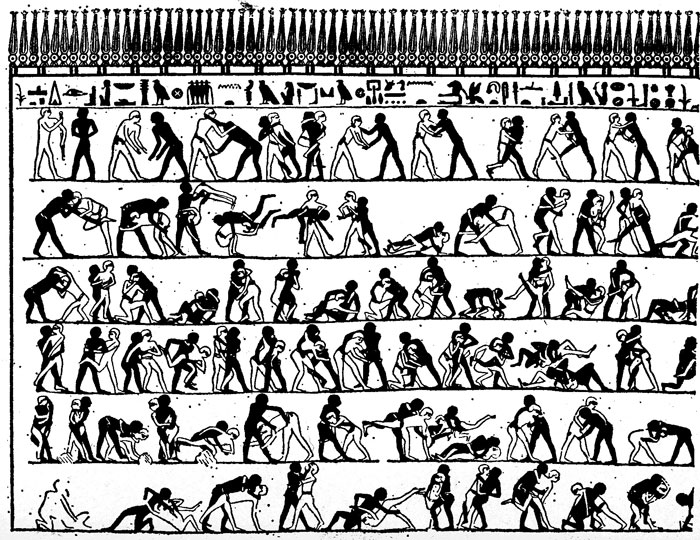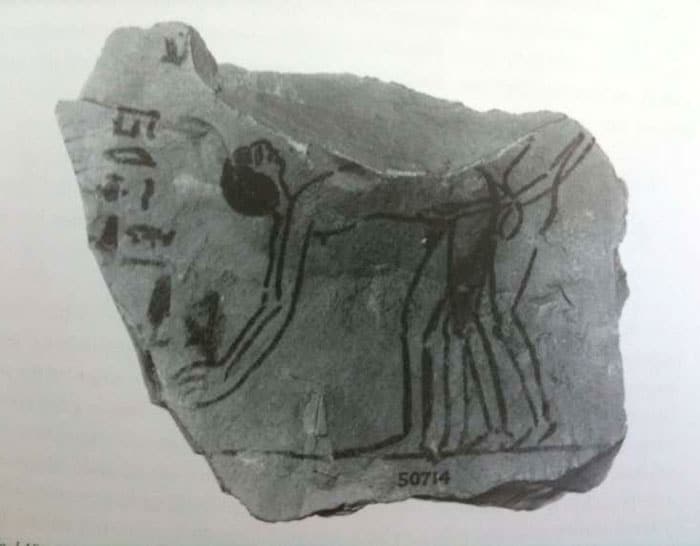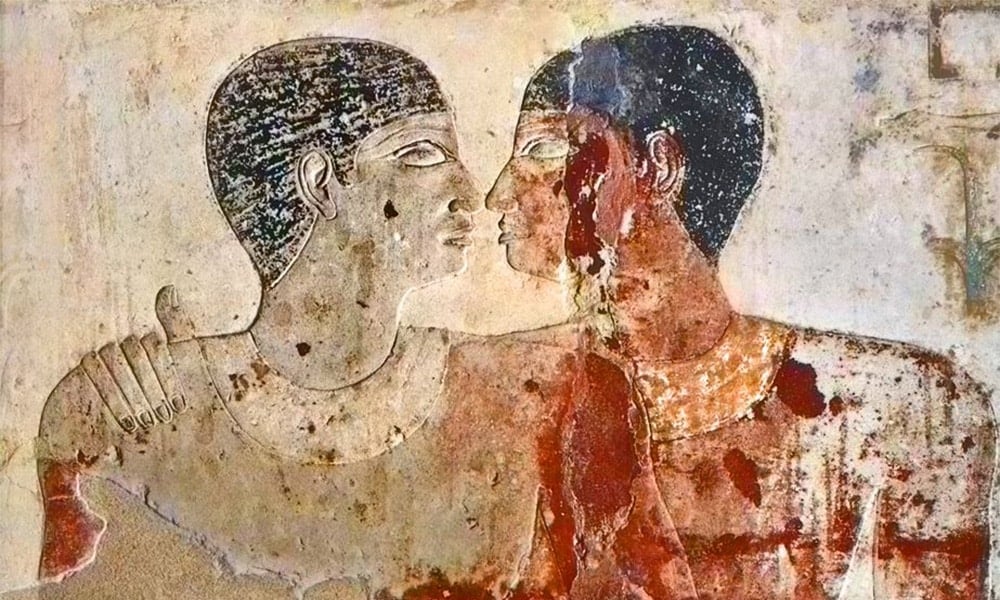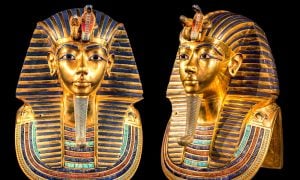The many faces of homosexuality in ancient Egypt.
In spite of the overwhelming assumption in the Arab world, that homosexuality never existed before Sodom and Gomorrah, historical and literary evidence suggests otherwise. Homosexuality was not alien to the first civilizations known to humanity—more importantly, it was not considered deviant. It came with its own cultural products, myths, and literature.
The Quran says of homosexuality: “Will ye commit abomination such as no creature ever did before you?” Further, homosexuals are often referred to as the “people of Lot”, whose story appears in all three Abrahamic texts.
Yet, it has been found that Ancient Egyptian society was familiar with homosexuality as a cultural norm and practice, manifested in various artifacts and historical evidence. Among these are mythical accounts, such as the struggle between the gods Horus and Set, as well as physical artifacts, such as surviving papyri, statues, and tombs, dating back to the different Egyptian dynasties.
Permissible Lesbianism, Prohibited Adultery
Lesbianism was acknowledged in Ancient Egypt, though evidence of it is relatively sparse. A number of archaeologists have suggested that there is sexual symbolism in a number of scenes depicting women embracing, while others explicitly depict scenes of intimacy, particularly in the artifacts from Amarna.
In much of Ancient Egyptian art, however, it is difficult to distinguish males from females, due to the androgynous features of the figures depicted.
Related | The Oldest Gays in History
One passage in the Book of the Dead, written by a female author and dating back to 970 BCE, reads: “I never had sex with a woman in the temple.” This suggests that there was a degree of leniency toward lesbianism at the time, compared to the prevailing attitudes toward homosexual men. This particular passage, nonetheless, does not point to the prohibition of homosexuality or contempt for the receptive (“passive”) partner.
Rather, it specifically refers to homosexual (lesbian) intercourse in the temple, which at the time served as the site of popular celebrations and rituals of fertility, in which sexual acts would unfold between men and women, in particular the temple prostitutes.
From vengeful gods to lustful lesbians, the stories of homosexuality in Ancient Egypt are both diverse and plentiful.
Lesbianism is also mentioned in the Book of Dreams, which dates back to the later dynasties and was gathered from the Carlsberg papyrus. The papyrus depicts a woman admonishing another for having dreamt of engaging in sexual relations with a married woman. Various sources, including Egyptologist Cassia Spakoksa, point to the idea that the text forbids adultery, rather than lesbianism as a whole, suggesting that lesbianism was somewhat acceptable in Egyptian society.
Homosexuality Among the Gods

Ancient Egyptian mythology includes the story of the conflict between Osiris, god of the afterlife and a symbol of good, with his brother Set, god of the desert, storms, violence, and chaos. Osiris and Set were said to have been born to the sky goddess Nut and the earth god Geb.
The struggle between the two brother deities, who symbolized good and evil, is passed on to Osiris’ son Horus, born of his sister-wife Isis, goddess of health, marriage, and wisdom. After Set treacherously kills Osiris, Horus vows to avenge his father’s death and kill his uncle, with the support of his mother. However, vengeance would not be exacted without some homoerotic twists.
In his study of sexuality in Ancient Egypt, archaeological researcher Mohamed Gamal states that throughout various stages of the struggle, Set plans to humiliate Horus by having intercourse with him, then scandalizing him in front of the divine court.
Related | A Brief History of Hawaii’s Ancient Gay Culture
In some papyri and inscriptions, set appears to be praising Horus’ behind, referring to him intimately and enjoining him to sleep with him. Isis instructed Horus to play along and follow him into bed. However, Horus did not allow Set to ejaculate inside him, instead catching his seed in his hands.
Horus at first feigns a reconciliation with his uncle, then accepts an invitation to celebrate at his house. When night falls, Set orders a bed to be made for the both of them, planning to have intercourse with him; indeed, various artifacts affirm that they engaged in sexual intercourse.
Set goes to the divine court, with the intention of humiliating Horus and having him exiled.
The Murals and Tombs of Homosexuals

A couple of royal servants in the Fifth Dynasty, known as Niankhkhnum and Khnumhotep, were known to be brothers and lovers. It is said that their names translate to “lovers in the worldly life and the afterlife”, and that they served together as the head manicurists in the Palace of the King Nyuserre Ini.
A number of Egyptologists and archaeologists believe them to be the first homosexual couple in recorded history, thus concluding that the culture at the time did not preclude homosexual relations. A depiction of the two of them in an intimate stance was found on the walls of their tomb, where they were buried side by side.
Homosexuality in Pharaonic Culture

While evidence points to the fact that Ancient Egyptian society was largely accepting of male homosexuality, nonetheless, the receptive partner was viewed as inferior, while the active partner was celebrated and praised for his virility.
In the myth of Horus and Set, Horus was not concerned with denying having had intercourse with his uncle, but with denying having been on the receiving end of the act.
With the passing of time and the changes in ideology and beliefs, as traced in the artifacts from each era, the disdain for the receptive partner in a homosexual relationship grew. Eventually, Ancient Egyptians began using homophobic phrases in their insults and jokes.
Related | A Brief History of Gender-Bending Japan
Mohamed Gamal supports this theory, stating: “In contemporary Egyptian society, in certain youth circles, particularly those in the tourism and hospitality industries, it is not shameful to admit having engaged in homosexual relations, so long as you are the active partner.”
He traces these changes in ideology to the fact that Egypt was the center of a vast empire, thereby coming into contact with a number of different civilizations and cultures, which “perhaps disdained homosexuality, and therefore influenced Egyptian culture in that regard.” This was, of course, compounded by the advent of the Abrahamic faiths, which forbade homosexuality.
Yet, despite the existing evidence, Ancient Egyptian history is often distorted to reflect the culture and mores of contemporary Egyptian or Arab society. In many cases, history or archaeology lecturers have considered such representations of homosexuality as offensive to their conceptions of history, thereby attempting to erase large swathes of antiquity.
This article was originally published by Raseef22. Read the original here.
![]()







